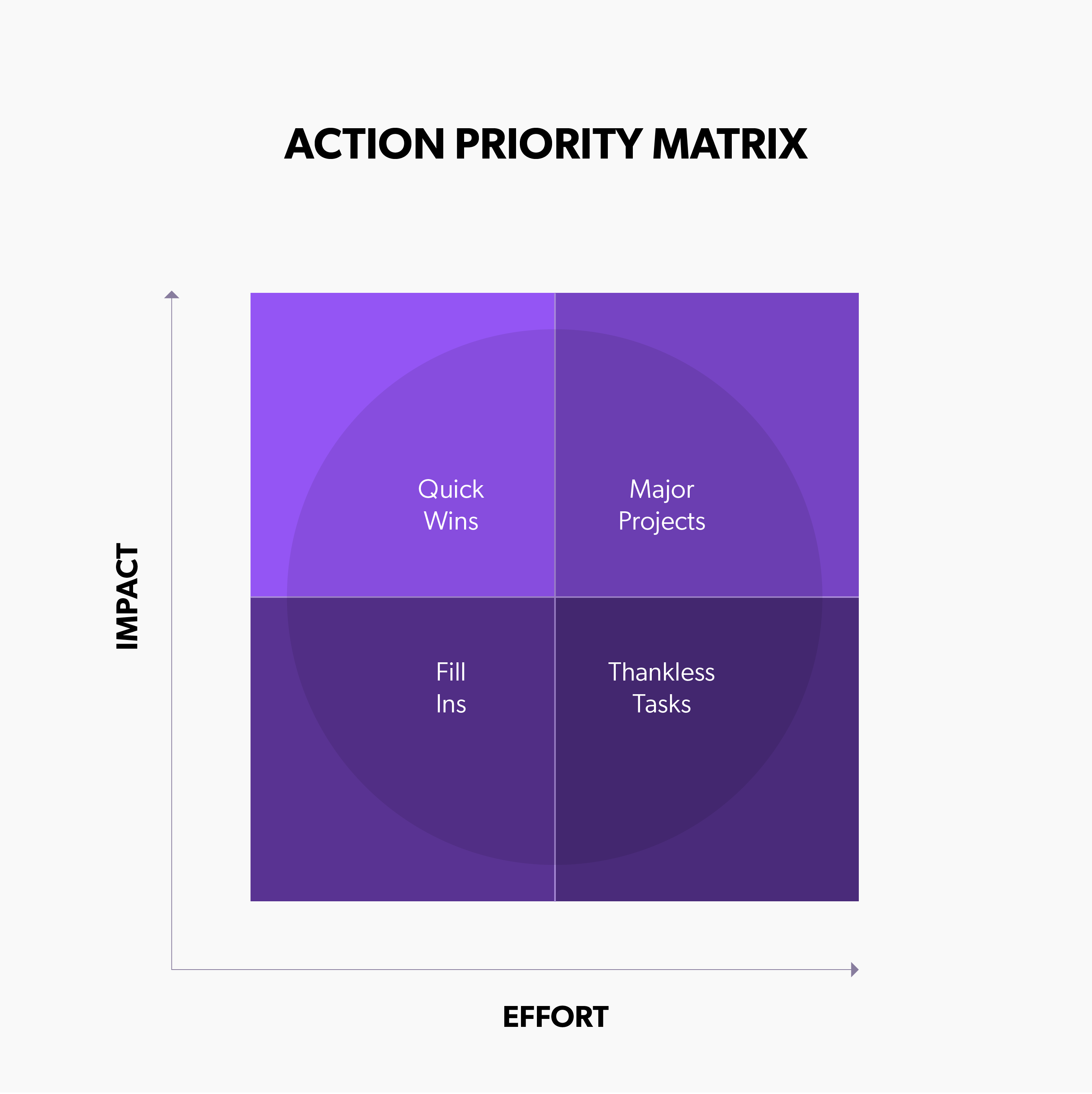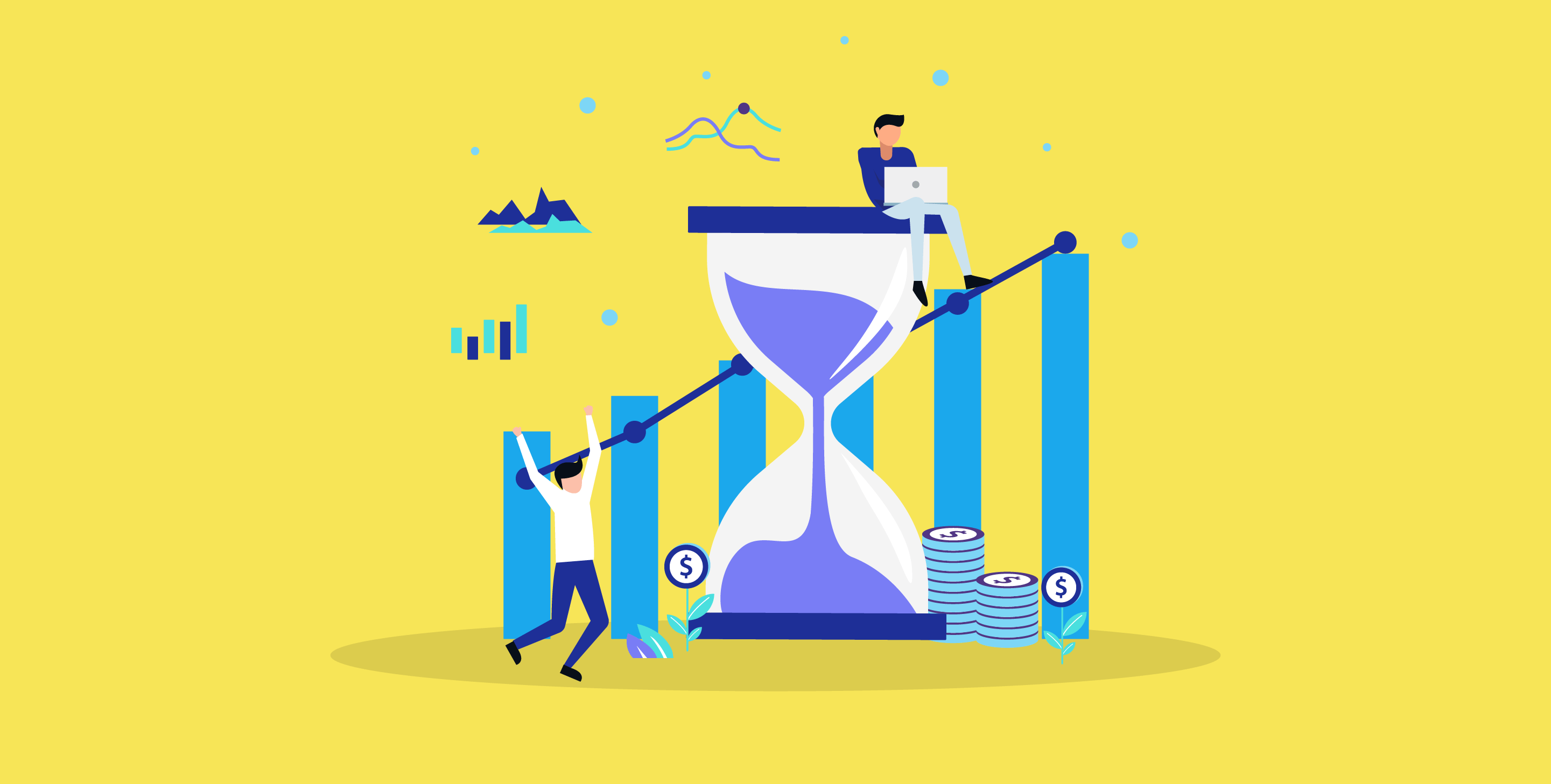We had recently hosted an Ask Me Anything event about creating product roadmaps which made us delve deeper into its importance. We found that you can utilize your roadmap to up your product strategy game, improve decision-making, and steer your business on the path to success!
Product roadmaps are an essential aspect of product planning & strategizing. It sets the groundwork for your product’s growth through time and creates a route through your product’s life cycle. They are a must for every business since it serves as a medium for communicating timely product growth to the teams and individuals involved.
So, let’s walk you through the what’s, why’s and how’s of product roadmapping!
What is a product roadmap?
A product roadmap is a visually represented timeline of feature and enhancement releases across every stage of a product’s life cycle. It charts out all the required assets needed to align with the company’s goals & objectives.
Product managers use these roadmaps to communicate with development teams and create a plan of execution. It’s also shared with the relevant stakeholders such as investors and potential customers to show how the product will progress and grow over time.
Importance of a product roadmap
Product roadmaps prevent businesses from straying away from their primary goals and objectives as they scale up. It helps all teams stay focused on the schedule and keep track of previous and upcoming releases.
With roadmaps, product managers can effectively plan out workflows, follow a productive approach to manage features and enhancements, and improve overall action efficiency in the organization.
Moreover, a product development roadmap plays a significant role when shared with the relevant external stakeholders since it depicts how the product will evolve over time and align with the company’s vision.
Product roadmap process
There is a lot of thinking that goes behind creating a product roadmap. It’s not about leaping into a list of features without having concrete reasons on why you need them. So, let’s take a look at the three steps involved in the creation of a useful product roadmap:
Plan & Strategize
First things first, determine why you’re developing this product – its purpose for existence and the outcomes you wish to achieve from it. This is the primary and most important step in the product roadmap process. It sets the groundwork for your product’s development cycle and helps you reach a clear consensus of what the bigger picture should look like for your business.
Choose your target audience
The next most crucial aspect of this process is deciding who you’re building this product for. Different segments of audiences have different needs. So, narrow down your audience niche, focus on their pain points and how your product can solve them.
Prioritize feature releases
Last but not least, decide the priority for each feature’s release across a given timeline and create a schedule accordingly. This helps the development team plan their workflows effectively and also allows the sales team to communicate the expected release of features that fall under client requirements.
Feature Roadmaps vs Outcome Roadmaps
While creating a product roadmap, one might question which is more important – a feature-driven or outcome-driven roadmap? So, let’s explore the differences between feature and outcome roadmaps!
Feature roadmaps contain a list of features that are needed as a requirement for the product to fulfil its goals and objectives. Outcome Roadmaps are a map of strategic feature releases that are planned in such a way to derive the maximum value for the organization.
Feature roadmaps are pre-planned in nature and aren’t subject to change often unless absolutely necessary. In contrast, outcome roadmaps are modified regularly as the market evolves, customer requirements change, and new competitors emerge.
Feature roadmaps are, like the name suggests, feature-driven, and work on the implementation of all the features needed to build a successful product. Outcome roadmaps, on the other hand, are more focused on solving customer problems then and there, rather than working on a scheduled list of features.
Outcome roadmaps, when compared to feature roadmaps, are more of a surefire way to improve the product experience. By shifting the focus from feature-rich to customer-friendly, outcome roadmaps can acquire more success for the product while also catering to essential metrics like customer churn rate, bounce rate, ease-of-use, etc.
How to prioritize effectively
Effective prioritization plays a crucial role in product roadmap planning. It usually revolves around the following key factors:
- Retention
- Growth
- Monetization
The levels of prioritization for the above three varies from company to company. It all depends on your product vision and the outcomes that matter most to your business. Every company aims to attain the most value out of their product.
If customer churn rates are skyrocketing, retention should be your company’s primary point of focus. If your business isn’t doing well on the customer acquisition front, growth should be prioritized over others. And finally, if your product’s lifetime value isn’t up to the mark and if your business is undergoing low profitability, monetization should top the list of priorities.
Now, these are very extreme scenarios, and it shouldn’t be that priorities can only shift once the situation is very drastic. Instead, you should monitor the metrics that contribute to business growth and success. If you find that specific metrics related to one of the key areas are not doing as well as expected, shift the focus accordingly.
Moreover, the order of priority between retention, growth and monetization are always subject to change. So, it’s recommended to reassess the ranks of importance once or twice every year.
Action Priority Matrix
The Action Priority Matrix (Impact vs Effort) has proven to be useful in product roadmap management. It helps product managers find a balance between short-term and long-term wins.
You can use it by first listing all your tasks, scoring them for both impact and effort (usually on a 10-point scale), and arranging them on the matrix based on their scores. This will help you figure out how to distribute priority and make quick decisions regarding task management.
The Y-axis measures the amount of impact gained from completing the task, and the X-axis measures the amount of effort required to complete the task.
Let’s take a look at the Action Priority Matrix and its four categories:

Quick Wins (High Impact, Low Effort)
These are the tasks that can bring you quick wins for your business. Tasks in this category should be completed as soon as possible to derive maximum benefit for your business. For example, adding an enhancement that is widely requested by your customers sets you on the right track for improved user experience as well as customer retention.
Major Projects (High Impact, High Effort)
This category consists of major projects that require immense effort and time, and also create maximum impact for your organization. For example, developing a complex, brand-new feature takes a lot of work, increases product value, and also brings in high impact on your customer base.
Fill-Ins (Low Impact, Low Effort)
Tasks under this category are fill-ins for time and should be taken up after completing Quick Win tasks and Major Projects. These only require focus if you have some extra time to spare in between other tasks. For example, product decisions needed for low priority enhancements or fixes can be saved for later.
Thankless Tasks (Low Impact, High Effort)
This category contains all the thankless tasks and should be eliminated from your tasks pipeline altogether. They are not worth the high effort and large amount of time required. Shift your focus to other tasks that are of higher importance and can get you more wins rather than losses. For example, re-organizing your product requirement documents is a real pain and doesn’t generate well enough impact to be considered as an important task.
Product roadmap best practices
How do you ensure that your roadmap achieves the mission and vision set forth for your product? Find out how with the five best practices for creating an effective product roadmap!
Plan extensively
The most crucial aspect of product planning is the plan itself. And without a good plan, it can be a tedious process to fulfil your company’s vision and strategy. So think of the end goal, do thorough research, and strategize how you can get your product to piece together the bigger picture, productively.
Know your target market
Besides planning the core strategy for your product roadmap, you need to be clear on who you’re building this product for. Figure out your target market, identify their needs from A-Z, and find the solutions to cater to them. Once you know your audience inside out, nothing can stop you from developing a product that’s curated just for them.
Update your roadmap
The market is always changing. New competitors pop up, new technologies emerge, and customer requirements are subject to change as well. In order to keep up with the ever-changing factors, and to prevent getting swept away by the tide of incoming competitors, update your roadmap on a regular basis. This is a common practice used by the most successful product managers out there.
Communicate to the relevant stakeholders
Share your product roadmap with the appropriate individuals involved like your organization’s development team, investors, and potential customers. Development teams will be able to create an efficient plan of execution based on the scheduled roadmap. Investors and potential customers will get a better understanding of how the product will deliver and evolve over time.
Use a roadmap tool
Creating a roadmap on Excel is known to be a tiresome process, with multiple spreadsheets and disorganization wreaking havoc on your product planning strategies. To speed up the process of building a product roadmap, use roadmap-specific software such as ProductPlan, Aha!, and Productboard (to name a few) to create a dynamic roadmap that is easy to modify when priorities shift, lets you assess different angles and views, and collaborate with other members of your team.
Role of feedback
The voice of customer (VoC) plays a vital role in shaping up your product. During the first stages of building your product roadmap, you’re within your own thought bubble. Tuning in to your customers’ input gives you a perspective from another set of eyes, and in turn, helps you develop a winning product.
Additionally, incorporating feedback into your product roadmap helps you prioritize what’s most important to your user base. Stepping into your customers’ shoes enables you to realize certain aspects which might have gone unnoticed before. Not to mention, it builds greater trust with your customers and shows that you genuinely value their opinions. And, to top it all off, you get improved retention, growth, engagement, and positive word of mouth!
This is why having an agile roadmap is so important. Because as times change, so do customer needs. Feature and enhancement requests will never cease, and it shouldn’t. All of this contributes to your product’s user experience.
So if a customer contacts your support team regarding a new feature, followed by say, ten others requesting the same, update your roadmap to fit their requirements. Your users’ feedback and opinions will always enhance product-led growth.
All in all, customer feedback is a goldmine of opportunities to transform your product into a powerhouse of features and more importantly, outcomes as well.






